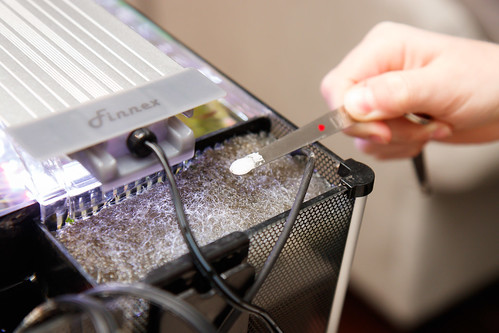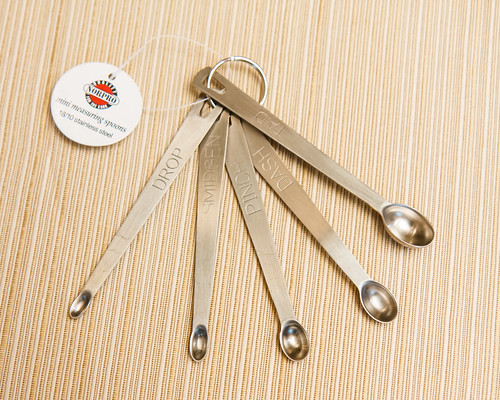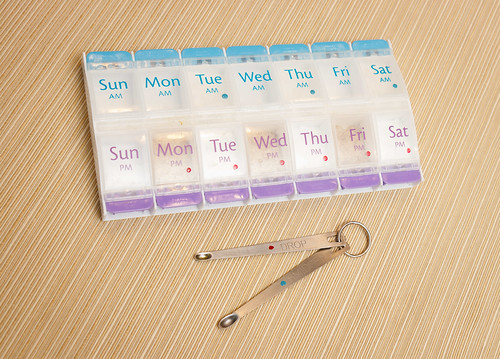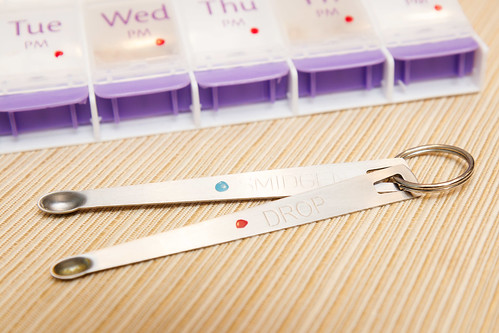Learning how to run a planted aquarium can be daunting at the start. Substrate types, light intensity, light duration, CO2 system, fertilizer dosing, plant selection, plant maintenance . . . on and on and on. The challenge is to sift through the noise and craft a plan for each aspect. One of the most daunting tasks was to understand and create a plan for fertilizer dosing. With the help of many internet sources, I have settled on the Estimative Index (or EI) Method.
I have another article that goes more into depth of other aspects of planted tanks as well as some details on the EI method, but the focus on this article will be to give a simple method of dry fertilizer dosing for planted tanks. It will cover all the how-to’s including:
- What dry fertilizers you need and where to get them
- Tools you need to measure and administer the dry fertilizers for your tank
- A simple calculator to determine the appropriate quantity of dry fertilizers to dose
- Along with the calculator, a schedule creator to tell when/how often to dose each fertilizer
Background to EI and Advantages to Dry Dosing Fertilizers:
Before diving in, there are a few concepts to establish. This article is not an in-depth source for theory and competing methods of dosing. It will establish the in’s and out’s of dry fertilizer dosing using the EI method.
Without getting too far into the theory, Estimative Index (EI) is just that – dosing fertilizers to a rough ‘estimate’ of what your planted tank needs. Specifically, it is adding all the nutrients plants need in slight excess. Because we are dosing in excess of what the plants will use, it is imperative that regular (weekly is recommended) water changes are performed. The regular water changes ‘reset’ the tank and remove the excess. By removing and replacing 50% of the water every week, there is a limit to how high nutrients can accumulate over time. I adhere to this and perform a 50% water change ever week and I suggest you do the same, especially if you are just starting out.
I have always added dry fertilizers to the aquarium instead of liquid. The reasons are simplicity and cost. Liquid fertilizers are available from many companies large and small. The reason I don’t use liquid fertilizers is because they contain the same chemicals that we will dry dose, but are diluted with water. Most of what you are paying for (the volume of the container) is just water. The cheaper way is to just dose dry chemicals – you can add them directly to the tank. For a nano aquarium, a few ounces of fertilizers can last years and years, making the annual cost very low.
Fertilizers for Dry Dosing – What You Need and Where to Get Them:
There are two ‘Macro’ fertilizers you need to get – and a third that is optional. They are:
- KNO3 (Potassium Nitrate)
- KH2P04 (Potassium Phosphate)
- K2SO4 (Potassium Sulphate) – This is the optional fertilizer – I will discuss in what scenario(s) you may want to dose this. If you are purchasing in bulk, I might suggest going ahead and getting this one so it will be on hand if you decide you want to use it later.
There is also ‘Micro’ fertilizers, also known as trace element fertilizers. I have for years used and would recommend:
- Plantex CSM + B
: This provides many balanced trace elements your plants need. It contains: Total magnesium 1.5%, Copper 0.1%, Iron 7.0%, Manganese 2.0%, Molybdenum 0.06%, Zinc 0.40%, Boron 3.8%, EDTA 65.4%
I got each of the above dry fertilizers from someone on a planted aquarium forum years ago. I just found out that this person now has his own storefront and is selling a kit that includes all of the above – NilocG Aquatics EI NPK+CSM+B. It’s a great way to get all the fertilizers you need from one vendor.
How to Dry Dose Fertilizers in a Nano Aquarium:
The only additional tool that is needed to dry dose fertilizers in your aquarium are a size appropriate set of measuring spoons. Dosing for smaller aquariums can require smaller fractions of teaspoons. Luckily, there are sets of measuring spoons that go down to 1/64 Teaspoon, plenty small for even a 5 gallon nano aquarium. If your tank is 40 gallons [151 liters] or smaller in volume, use this set of stainless mini measuring spoons that range from 1/64 Teaspoon to 1/4 Teaspoon.
If your tank is larger than 40 gallons [151 liters] a more conventional set of measuring spoons like these will work.
A note on the ‘mini’ measuring spoons – they are labeled with different names other than fractions of Teaspoons. They are deciphered as follows:
- Drop = 1/64 Teaspoon
- Smidgen = 1/32 Teaspoon
- Pinch = 1/16 Teaspoon
- Dash = 1/8 Teaspoon
- Tad = 1/4 Teaspoon
The method for dosing is simple. I will address the amount and days to dose in the section below, but actually administering the dry fertilizers can be as simple as dumping in the water.
If you have an all-in-one tank that has compartments separate from the display section, that is the ideal place to dump the fertilizers. In our Spec V, I drop the dry ferts directly onto the filter media – they dissolve quickly. If you have a sump, that is another good place to drop in the fertilizers. An HOB filter system would also be a good place to dose.
If you don’t have another place other than the main section, you could drop the dry fertilizers directly into the main tank. However, it is a bit disconcerting to have the fish trying to digest the salts like food has been dropped in. I don’t think it hurts them, but a better practice may be to dissolve them outside the tank. Keep a separate small cup or container near your aquarium just for the task. Scoop out some tank water into this cup, drop in the day’s fertilizer(s) into the cup; swirl to dissolve, then pour into the aquarium.
Aquarium Dry Fertilizer Dosing Quantities and Days:
The Estimative Index method is ultimately from Tom Barr. However, NiloCG.com has a great page that summarizes several popular dosing methods including EI.
I think the table on that page does a perfect job of breaking down the required doses of fertilizers and the days to dose. To make it even easier, I have incorporated the dosing from that table into the calculator below.
Using the table is fairly simple. First enter your preferred units (SI or English). Then, enter your tank’s water volume. Next, enter your tank type (low, medium, or high light aquarium). The calculator will output what to dose, in what quantity, and on what days:
When to Dose the ‘Optional’ Macro K2SO4 (Potassium Sulphate)
Honestly, the issue of when to dose Potassium Sulphate (as part of an EI dosing regimen) is a bit of a mystery to me. The best answer I have is that you should dose K2SO4 as part of EI dosing if your tank is deficient in potassium.
Knowing your tank is deficient in potassium can be by observation or by testing. The only common sign that I understand can be attributed to potassium deficiency are pin holes observed in leaves. If you see this in your aquarium plants, consider adding the Potassium Sulphate to your EI dosing schedule.
Some say that yellow leaves are a sign of potassium deficiency. This can be true, but yellow leaves can be a symptom of many other deficiencies, so you can’t automatically correlate yellow leaves with low potassium.
Other Ideas to Streamline Dry Dosing Aquarium Fertilizers:
I got the idea of using pill containers to help me remember what to dose on what days. If you are only dosing KNO3 (Potassium Nitrate), KH2P04 (Potassium Phosphate), and your Micros, you only need a 2-A-day pill container.
I color coded (with dabs of nail polish) the spoons that are used and matched with dabs on each lid of the pill container.
What I love about this method is it not only makes it brain-dead easy for me, it also allows someone else to easily catch on to the system. When I’m out of town, our kids or neighbors who are tank sitting can easily figure out with this system what fertilizers to add.











this was a very informative article to read !
Hi,
This is a commend about the dosing calculator. Not sure if this is a bug or working-as-designed. The K2S04 text field (showing the calculated value) reads “(Potassium Phosphate)”, I think instead of “(Pottasium Sulfate)”.
Thanks so much for telling me! I just updated and hopefully that error is fixed.
I am pretty new at this and I don’t even know what dry fertilizer does, is this a necessary step because I’ve never heard of it before?
Hello Lorraine! I wouldn’t say it’s necessary, but if you have plants in your tank, they often respond well to adding fertilizers and it’s easy to do this by adding to the water.